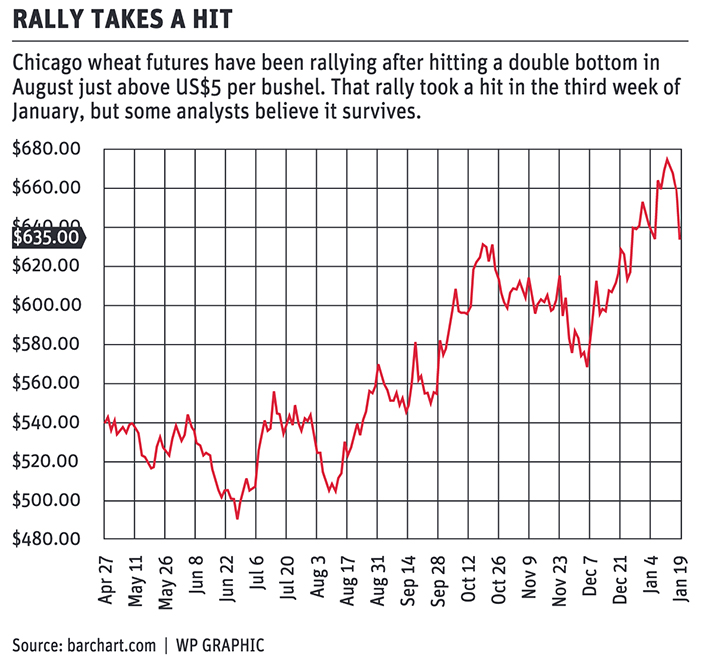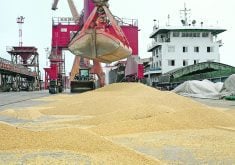Prices expected to recover after recent drop but it may be a good time to make some risk management pricing decisions
Crop markets got a gut punch in the third week of January, after months of climbing ever higher.
That’s no reason to panic, say MarketsFarm analysts.
“I realize it’s tough to watch these steep selloffs,” said Mike Jubinville in a MarketsFarm wheat outlook session.
“While we’re in the midst of it, you start questioning your own resolve.”
However, there’s both reason for optimism and a prompt to action in the recent setback in crop prices.
“Why not sell some?” said Jubinville.
Read Also

Flax sector sees omega-3 opportunity
SASKATOON — A global shortage of omega-3 oils could be an opportunity for the flax sector, says an industry official….
Bruce Burnett said farmers should be looking at today’s relatively high prices to secure some new crop prices.
“We should be looking at trying to price in some of the new crop opportunities,” said Burnett, director of weather and market information for Glacier MarketsFarm.
Jubinville expects prices to recover and probably move higher, but he thinks now is a good time to make some cash-flow and risk management pricing decisions.
“I am still comfortable holding unpriced inventory heading into the spring season, basically on all commodities,” he said in the webinar, which was hosted by The Western Producer and Farmtario.
Wheat prices are at seven-year highs after entering a sharp rally in November.
Chicago soft red winter wheat futures have risen from slightly more than $5 per bushel to $6.50 or so Jan. 22. Prices hit a nearby peak of $6.90 on Jan. 15. That strength has led to a rally in cash market bids and new crop prices across the wheat spectrum.
Burnett said new crop conditions and Russian export tariffs will likely have big impact on markets in the coming months.
The Russian government is imposing a 25-euro per tonne export tariff in February, which will be boosted to 50 euros in March.
“I don’t think we’ll see a lot of Russian exports at current values,” said Burnett.
Beyond price, the Russian situation should also make it easier for Canadian exporters to move wheat into the global market.
“We’re in an exceptional opportunity here to export some more wheat,” he said.
Jubinville said the sudden slump in wheat and other crop prices has been a shock to some, but in a bull market, it’s a regular occurrence.
“I think solid prices are going to continue in the spring…. I suspect there is room for competitive pricing to percolate higher in the Pacific region as the stocks begin to tighten for the remainder of the marketing year,” said Jubinville.
“It’s extremely healthy for a market, after going through periods of significant incline on the price chart, to have some corrective measures come into play just to rebalance the marketplace.”
Regardless of whether prices continue to stay high or rise as he expects, or fall, Jubinville thinks steady pricing is a good idea for at least some of the crop.
“I have no problem doing some sales, incrementally selling into a rising market,” said Jubinville.
“These are some of the best prices we’ve seen in years.”
Burnett said Northern Hemisphere weather conditions will have a lot to say about where prices can go. With normal or good weather, that could become a negative factor.

















